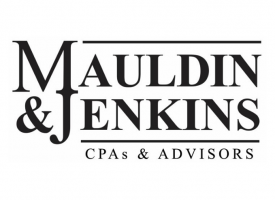by Tim Lyons, CPA
What is LIBOR?
Why is LIBOR being replaced and when?
What will replace LIBOR?
What does this mean for me?
- The hedging derivative instrument is effective as of the end of the reporting period.
- The hedging derivative instrument is amended or replaced to change the reference rate of the hedging derivative instrument’s variable payment, or to add or change fallback provisions related to the reference rate.
- If the reference rate of the amended or replaced hedging instrument’s variable payment is multiplied by a coefficient or adjusted by addition or subtraction of a constant, the coefficient or constant is limited to what is necessary to equate the replacement rate and the original rate.
- If an up-front payment is made between the parties, the amount of the payment is limited to what is necessary to equate the replacement rate and the original rate.
- If the replacement of the reference rate is effectuated by ending the original hedging derivative instrument and entering into a replacement hedging derivative instrument, those transactions must occur on the same date.
- The terms that affect changes in the fair values and cash flows in the original and replacement hedging derivative instruments are identical, except for the term changes that may be necessary for the replacement of the reference rate.
Statement No. 93 also clarifies that the term changes that may be necessary for the replacement of the reference rate are limited to the following:
- The frequency with which the rate of the variable payment resets;
- The dates on which the rate resets;
- The methodology for resetting the rate; and
- The dates on which periodic payments are made.
What else is included in Statement No. 93?
Other guidance included in Statement No. 93 include up-front payments, benchmark interest rates, two-step transitions, and lease modifications.
Up-Front Payments
If an up-front payment is made to equate the replacement rate and the original rate, that payment should be reported as an asset (for payment made) or a liability (for a payment received) and amortized using the interest method over the duration of the related hedging derivative instrument.
Benchmark Interest Rates
Statement No. 93 also amends Statement No. 53 to define the term “reference rate” and to remove LIBOR as an appropriate benchmark interest rate. Under the amended guidance in Statement No. 93, the following rates are deemed appropriate benchmark interest rates for derivative instruments:
- Interest rate on direct Treasury obligations of the U.S. government;
- Effective Federal Funds Rate; and
- Secured Overnight Financing Rate (SOFR).
Two-Step Transitions
Governments may choose to transition from an IBOR to an interim reference rate before it transitions to a SOFR when liquidity in the SOFR market grows. Hedge accounting should continue to be applied in the two-step transition if certain criteria are met.
Lease Modifications
Under GASB Statement No. 87, a government is required to apply the provisions for lease modifications – including remeasurement of the lease liability or lease receivable – when the rate in a contract with variable lease payments is replaced. Statement No. 93 simplifies the accounting analysis for lease modifications affected by reference rate reform by adding the following exception to Statement No. 87: “If variable payments of a lease contract depend on an IBOR, an amendment of the contract solely to replace the IBOR with another rate – that’s adjusted, if necessary, to essentially equate the replacement rate and the original rate – by either changing the rate or adding or changing fallback provisions related to the rate, isn’t a lease modification.”
When is all of this effective?
The requirements of Statement No. 93, except for paragraphs 11b, 13 and 14, are effective for reporting periods beginning after June 15, 2020. The requirement in paragraph 11b (dealing with LIBOR as an appropriate benchmark interest rate) is effective for reporting periods ending after December 31, 2021. And finally, the requirements in paragraphs 13 and 14 (lease modifications) are effective for fiscal years beginning after June 15, 2021.


